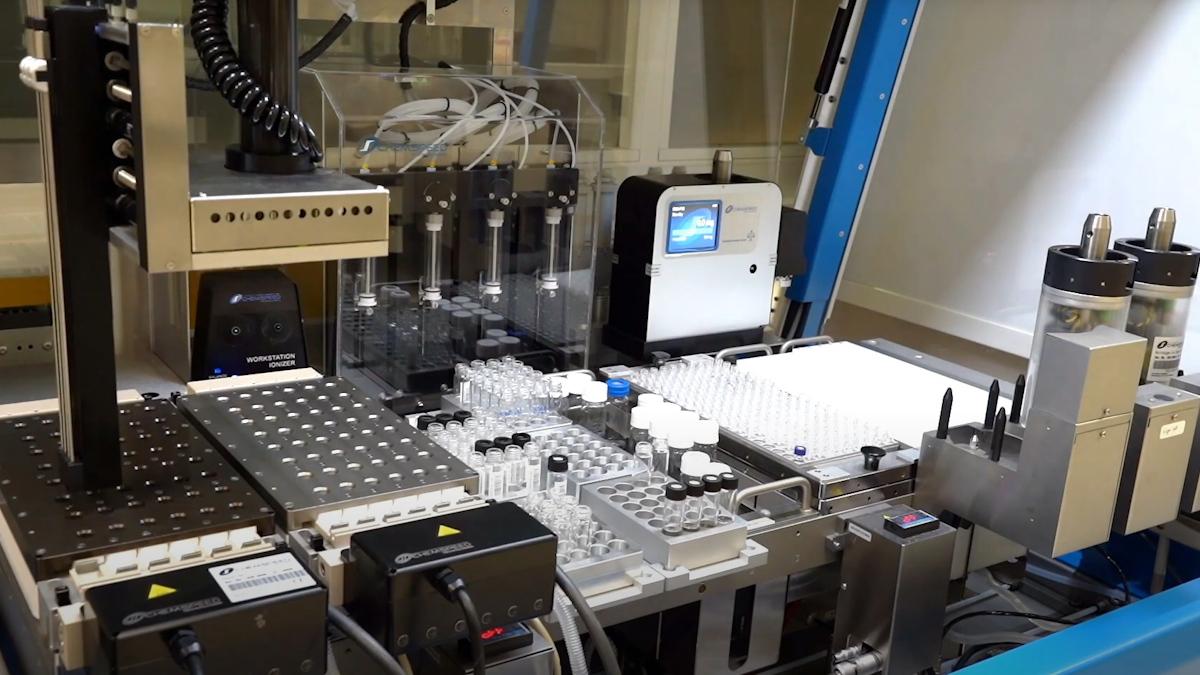A greener catalysis: Talking sustainable, scalable chemistry with KCL

As King’s College London (KCL) scientists are once more in the headlines – this time with new ‘plug and play’ drug delivery technology that could offer a possible breakthrough for multi-strain vaccines – pharmaphorum harks back to an interview held earlier this year with KCL Professor of Nanochemistry, Ismael Díez-Pérez, discussing the use of electricity to catalyse chemical reactions on the centimetre scale.
Catalysis is fundamental to creating materials that underpin the modern world, from the chemical industry to the production of pharmaceuticals. However, these reactions currently rely on toxic precious metals that are expensive and environmentally damaging to extract and dispose of. So it is that Prof Díez-Pérez and collaborators from the University of Barcelona and ETH Zurich used an electric field to accelerate chemical reactions at scale: a cheaper and more energy efficient catalyst than rare earth metals such as platinum, palladium, and rhodium.
A step change for pharmacology: Context and computational theory
Building on research published in 2016 that proved an electric field could catalyse reactions in a nanoscale gap, KCL scientists from the Department of Chemistry upscaled the methodology to electrically catalyse reactions on a centimetre area electrode. By designing a test bed that replicated the electric fields present in enzymes, the team induced chemical reactions and produced new chemical compounds at the centimetre scale.
It is now predicted that the electric field could be controlled to form pure isomeric chemical compounds, which would pave the way for an appropriate molecular shape for the human body to recognise, and enable a catalysis that is cheaper, more energy efficient, and less pollutant.
“Everything we do is always coming from somewhere; there's a story behind it,” began Prof Díez-Pérez. “Ten to 15 years back, it was computational people doing theory driving this hypothesis, this idea of using electric fields to accelerate reactions. The reason is not random – it comes from nature. Most of the stuff we do, nature did it before.”
“What's an enzyme? A protein. We have enzymes for many different reactions, the purpose of enzymes is to accelerate reactions,” he continued. “There's a Nobel Prize, 2015 or 2016, in computational science where they proposed for the first time that […] there is an electric field inside enzyme cavities. [More] recently, some people doing different spectroscopies, different experiments, measured very high electric fields inside enzyme cavities […] about 100 megavolts per centimetre.”
At that juncture, the question became, if nature does it, why not Man?
“In our lab, we can make very small cavities between two electrodes,” explained Prof Díez-Pérez. “We use a scanning tunnelling microscope. There's a little tip, a little electrode that comes very close to another electrode. Then, you make a very small cavity. What we did is we emulated this cavity - high voltage, high electric field cavity - [and] we put two reactants. The reaction is a Diels-Alder reaction; it's a very famous reaction in organic synthesis for drugs. We put the two reactants, A and B, together. Then, pow! Made a spark. We saw that we were accelerating reactions.”
A question of sustainability and scaling
With the proof of concept done, the next stage is evidencing how the science can be upscaled into wider society; that is to say, commercialised via industry.
“We can do it in many more molecules,” stated Prof Díez-Pérez. “We're going to start thinking about producing microgram, milligram quantities of this. Now, the difference here is that we're not using any catalyst. Usually, to accelerate reactions, you need a catalyst. For example, in organic synthesis, the catalyst is usually metal complexes […] like platinum and palladium.”
“[But] they're expensive,” he continued. “Then, after the reaction happens, you have to purify and extract it out of the reaction mixture because they are toxic. It makes the catalysis a bit not green, not sustainable in a way. In a click reaction, the catalyst is copper. In the [new] study, it compares directly the performance of the chemical catalysis with copper and with just electric fields. When I say just electric fields, it means that we don't add anything there. It's just reactant A, reactant B, no catalyst. The only catalyst is the electric field.”
“Now, we need to work with industrial partners, people that are interested in this, to make it happen,” Prof Díez-Pérez said. “To really design [and] do the engineering, which is like making everything optimal: think about the geometries, think about all the reactants. To just make it practical, and make it plausible.”
“We have to work with the stakeholders, with our industrial partners, people that might see interest in that different chemical catalysis. We can upscale this electrostatic catalysis process: we don’t just need the help of engineers and industrial partners, but also the people interested in taking it to the final level,” he concluded.











